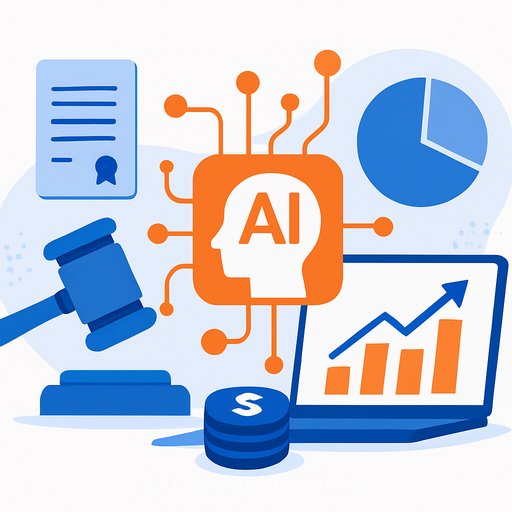AI mistakes are costing businesses. Here's how legal teams prevent the next one
AI-generated reports that hallucinate. Chatbots inventing policies. Misstatements published at scale. Each error has a price tag: refunds, fines, class actions, and headlines that stick.
Legal teams can't leave this to IT. You need guardrails that withstand cross-examination, regulator scrutiny, and discovery.
Where liability shows up
- Consumer protection and misrepresentation: misleading outputs or invented policies (see the high-profile airline chatbot ruling in Canada) can trigger refunds and penalties.
- Privacy and data protection: unlawful processing, profiling without lawful basis, and weak transparency under GDPR/UK GDPR, PIPEDA, and US state laws.
- Discrimination: AI used in hiring, lending, or eligibility decisions can create disparate impact claims.
- IP and content: scraping, training-data provenance, and output similarity risks; DMCA takedowns and copyright suits.
- Securities and disclosure: AI-inflated or inaccurate statements in investor materials or earnings calls.
- Contract: breach of warranties, unauthorized data use, and violations of platform or API terms.
A practical AI safeguards stack for counsel
Treat this like product risk, not IT tooling. Build a stack you can defend in court and with regulators.
- Use-case inventory and tiering
- Catalog every AI use. Classify by potential harm (internal, customer-facing, safety-critical).
- Block banned uses (legal advice, medical triage, credit decisions) unless expressly approved and compliant.
- Human-in-the-loop for external outputs
- Require review and sign-off for anything customer-facing, financial, or legal-adjacent.
- Set approval gates tied to risk tier.
- Grounding and source controls
- Prefer retrieval-augmented generation (RAG) with trusted sources. Show citations in outputs.
- Use factuality checks and guardrail models; tune temperature and length to reduce fabrication.
- Clear user disclosures
- Explain AI involvement, limitations, and how to reach a human. Disclaimers help expectations but are not a shield.
- Avoid "advice" language for sensitive domains.
- Vendor and model due diligence
- Demand IP warranties, training-data representations, security exhibits, DPAs, audit rights, and change-notice obligations.
- Check evaluation reports (safety, bias, hallucination rate). Align with your risk thresholds.
- Testing and red teaming
- Pre-deployment testing for accuracy, safety, and bias. Document test sets, thresholds, and results.
- Run adversarial prompts and stress tests. Re-test after model updates.
- Privacy and data governance
- Data minimization, PII filtering, retention limits, and access controls.
- Conduct DPIAs/PIAs for higher-risk uses. Maintain records of processing.
- Monitoring and logging
- Log prompts, outputs, model versions, and approvals. Enable recall for investigations and discovery.
- Set quality metrics with alerts (hallucination rate, policy deviations, bias flags).
- Incident response playbooks
- Define takedown, correction, and notification steps for AI-caused harm.
- Preserve evidence and issue litigation holds. Track remediation.
- Documentation you can show a regulator
- Model cards, data lineage, testing reports, approvals, and policy exceptions.
- Keep versioned records; time-stamp decisions.
- Training and access controls
- Train staff on approved prompts, prohibited uses, and escalation paths.
- Restrict advanced capabilities to trained users; require multi-factor for admin features.
- Insurance review
- Confirm coverage under tech E&O, cyber, and media liability for AI-related claims.
- Address contractual indemnities and caps for AI incidents.
Jurisdictions and standards to watch
- EU: The EU Artificial Intelligence Act sets duties for providers and deployers by risk class. Start mapping your use cases and governance to its requirements. Official overview
- UK: ICO guidance on AI and data protection, plus expectations on explainability and fairness for automated decisions.
- USA: FTC is policing unfair or deceptive AI claims and outcomes under Section 5; state privacy laws add consent, notice, and profiling controls.
- Canada: PIPEDA obligations apply now; proposed federal AI law will increase duties for high-impact systems.
Contract language that saves you later
- AI use policy: define allowed use, human review, and logging requirements.
- Representations and warranties: training-data rights, non-infringement, safety controls, and model change transparency.
- Indemnities: IP, privacy, security, and deceptive output coverage; carve-outs for customer misuse.
- Service levels: quality metrics, issue response times, and rollback rights after regressions.
- Data terms: no training on your data without written consent; clear deletion and retention rules.
- Audit and testing: rights to see evaluation results and run independent tests.
Common failure patterns to eliminate
- Unreviewed, customer-facing chatbots that improvise policies or prices.
- Models fine-tuned on sensitive data without consent or minimization.
- Outputs published without source grounding or citations.
- No post-release monitoring or drift detection.
- Orphaned "pilot" use cases that never went through legal review.
Action plan for legal teams
- Stand up an AI review committee (legal, security, privacy, product) with a clear intake process.
- Adopt a control framework (e.g., NIST AI RMF) and map it to your policies and evidence.
- Prioritize fixes for the highest-risk external-facing use cases first.
- Run a tabletop exercise for an AI misstatement incident next quarter.
The pattern is clear: courts and regulators expect the same diligence you apply to any product that can affect people and wallets. Put the guardrails in now, before an output writes the next claim for the plaintiff.
Practical AI training for teams by job function can shorten the learning curve and reduce mistakes at the source.
Your membership also unlocks:






